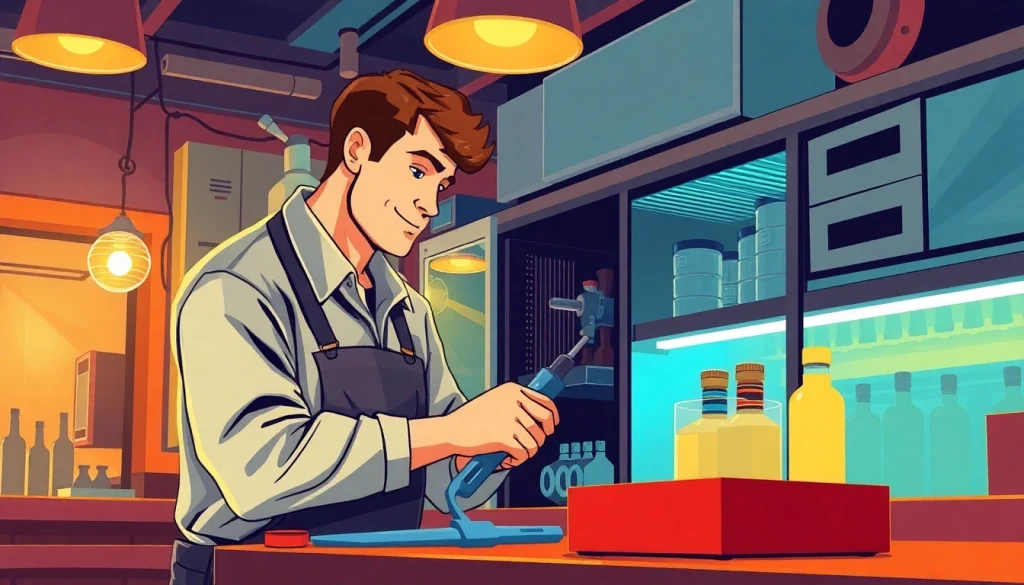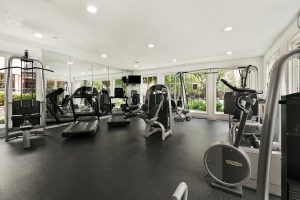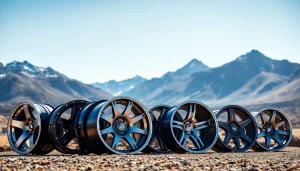Expert Bar Refrigeration Repair: Ensuring Your Equipment Runs Smoothly

Understanding Bar Refrigeration Systems
Bar refrigeration systems are essential components of bars, restaurants, and hospitality venues, keeping beverages, food items, and other perishables at safe and optimal serving temperatures. The efficiency of these systems is critical not only for maintaining product quality but also for reducing energy costs. Understanding the mechanisms and components of bar refrigeration systems can help you better manage and maintain them. For expert assistance, you might consider professional bar refrigeration repair services, ensuring your equipment runs smoothly.
Types of Bar Refrigeration Equipment
There are several types of bar refrigeration equipment, each designed for specific functions:
- Under-Counter Refrigerators: These units are compact and fit neatly under counters, making them ideal for limited spaces. They provide easy access to cold beverages and can keep frequently used items at hand.
- Back Bar Coolers: Typically positioned behind the bar, these coolers display drinks while maintaining optimal temperatures. They often come equipped with glass doors for product visibility.
- Ice Makers: Ice machines are vital for bars, providing ice for drinks and cooling. Regular maintenance and proper repair can prevent unexpected breakdowns, ensuring a consistent supply of ice.
- Bottle Coolers: Designed specifically for beer and other bottled beverages, bottle coolers keep drinks chilled and often have a pull-out or sliding door feature for easy access.
- Walk-in Refrigerators: For larger establishments, walk-in coolers allow for significant storage of perishable items, maintaining a consistent temperature across larger quantities.
Common Issues in Bar Refrigeration
Bar refrigeration systems can encounter various issues that affect their performance:
- Cooling Failure: This could be due to the compressor malfunctioning, refrigerant leaks, or blockages in the condenser coils.
- Excessive Noise: Loud operational sounds may indicate issues with the fan or compressor, suggesting that repairs are needed.
- Frost Build-Up: Frost accumulation on the evaporator coils can hinder the system’s ability to cool efficiently, often a result of poor door seals or malfunctioning defrost timers.
- Leaking Refrigerant: This not only reduces efficiency but can also be harmful to the environment. Regular checks can mitigate these issues.
Signs You Need Bar Refrigeration Repair
Recognizing the signs that your bar refrigeration system may need repair can prevent more significant issues down the line:
- Temperature Fluctuations: Inconsistent temperatures can lead to spoilage and product loss.
- High Energy Bills: If your energy costs suddenly increase, it could indicate that the refrigeration system is working inefficiently.
- Unusual Odors: Foul smells may indicate food spoilage or mold growth, necessitating immediate attention.
- Ice Buildup: If you notice excessive ice accumulation, it could indicate a malfunctioning defrost system.
Essential Maintenance Tips for Bar Refrigeration
Regular Cleaning and Maintenance
Regular cleaning is paramount for maintaining the efficiency of bar refrigeration units. This includes:
- Cleaning Condenser Coils: Dirty coils can significantly reduce cooling efficiency. Clean them at least once every six months.
- Wiping Down Surfaces: Daily cleaning helps prevent spills and contamination, which can lead to odors and mold growth.
- Emptying Drains: Ensure that the condensate pan is emptied regularly to prevent water accumulation and potential leaks.
Monitoring Temperature Settings
Consistently monitor the temperature settings of your refrigeration units. Maintaining a temperature of 36°F to 38°F (2°C to 3°C) is optimal for beverages, while perishables should generally be cooler. Use calibrated thermometers and digital monitoring systems if possible.
Checking for Leaks and Damage
Regular inspections for leaks or damage are vital in preventing the loss of refrigerant and the failure of the cooling system. Look for:
- Visible Drips or Wet Spots: Indicates potential refrigerant leaks or condensation issues.
- Corrosion on Components: Rusted or corroded parts should be replaced to ensure system integrity and function.
- Faulty Door Seals: Inefficient door seals contribute to energy loss and temperature fluctuations.
Bar Refrigeration Repair Process
Diagnosis of Issues
When a refrigeration issue arises, an expert technician will begin with a comprehensive diagnosis to identify the root cause. This may involve:
- Visual Inspections: Looking for physical signs of wear, leaks or blockages.
- Functional Tests: Monitoring the operation of various components, such as the compressor and fans.
- Temperature Measurements: Checking the temperature of various compartments against manufacturer specifications.
Steps Involved in Repair
The repair process generally follows several key steps:
- Shutting Down Equipment: Safety is paramount; turning off the system prevents further damage during repairs.
- Replacing or Repairing Components: Based on diagnostics, faulty parts are fixed or replaced, whether it’s a faulty compressor, fan, or gaskets.
- Recharging Refrigerant: If refrigerant levels are low, the system will need to be recharged following leak repairs.
- Testing the System: After repairs, the unit is tested to ensure it is functioning correctly before placing it back in service.
Tools and Equipment Used for Repairs
Technicians typically employ specialized tools for efficient and safe repairs. These include:
- Multimeters: For checking electrical components and connections.
- Manifolds: Used to measure refrigerant pressure and levels during diagnostics.
- Wrenches and Screwdrivers: Essential for disassembling components for repairs or replacements.
- Refrigerant Recovery Machines: Safely recovers refrigerants during repairs to prevent environmental contamination.
Choosing the Right Repair Service
What to Look for in a Repair Technician
Selecting the right technician is crucial for effective repairs. Look for:
- Certifications: Ensure the technician has undergone relevant training and is certified in commercial refrigeration.
- Experience: Technicians with specific experience in bar refrigeration systems will better understand your needs.
- Customer Service Skills: A good technician will communicate clearly and answer all your questions.
Evaluating Service Reviews and Reputation
Before hiring a repair service, check reviews and customer feedback. Look for:
- Online Reviews: Platforms like Google and Yelp can provide insights into customer satisfaction.
- Referrals: Ask other bar owners or industry colleagues for recommendations.
- Certifications and Awards: Recognition by industry organizations can be a huge positive indicator of reliability.
Cost Estimates and Warranty Information
Obtaining cost estimates upfront can prevent surprises. Consider these aspects:
- Written Estimates: Ensure that you receive a detailed written estimate that outlines all expected costs.
- Warranty on Parts and Labor: Verify the warranty offered on repairs and parts replaced to protect your investment.
- Emergency Repair Costs: Understand how much you’ll pay for emergency calls versus scheduled repairs.
Preventative Measures for Bar Refrigeration Longevity
Scheduled Maintenance Plans
Investing in scheduled maintenance can prevent larger repair needs. A plan might include:
- Quarterly Checks: Schedule professional inspections every three months.
- Routine Cleaning Tasks: Implement a cleaning schedule for staff to manage daily upkeep.
- Record Keeping: Maintain logs of service calls, maintenance tasks, and any issues observed to track performance over time.
Upgrading Older Equipment
Consider upgrading older refrigeration systems as technology improves:
- Energy Efficiency: Newer systems often come with enhanced energy efficiency, leading to cost savings.
- Advanced Features: Modern units may offer smart technology for monitoring and managing temperatures remotely.
- Improved Reliability: Upgrading to a new machine can reduce the frequency of repairs and breakdowns.
Energy-Efficient Practices to Implement
Implementing energy-efficient practices can prolong the life of your bar refrigeration systems:
- Optimize Temperature Settings: Avoid setting temperatures lower than necessary, balancing energy savings with product safety.
- Regularly Maintain Seals: Ensure that door seals are in good condition to prevent loss of cold air.
- Invest in Insulation: Enhancing insulation can help maintain temperatures and reduce energy usage.







